The operation of any complex electronic device directly depends on the power of its central part - the processor. And the laptop is certainly no exception. The number of processor cores, their PM, performance will either make the pastime at the laptop full of joy or painful. The editorial staff of the site "bestx.htgetrid.com/en/" offers your review of the best power processors for laptops for 2020.
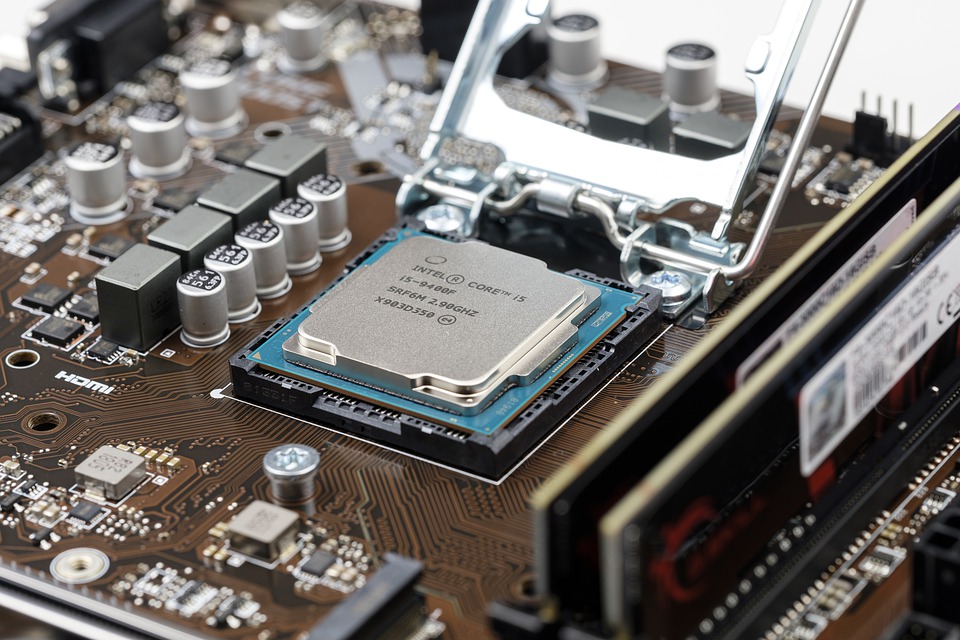
Content
Why is processor power so important to a laptop?
The processor (aka CPU, microprocessor, chip) is the heart of your laptop. Its performance, both computing and graphics, depends on it. That is, it provides not only the speed of work with applications, but is also responsible for some types of their external display. It is the processor that affects such parameters of the laptop as:
- The speed of the operations carried out;
- Possibility of setting multitasking;
- The temperature generated by the device;
- Electricity consumption, battery consumption, which means battery life.
But most importantly, if a stationary computer can eventually change the processor, sometimes even without changing the "motherboard", the motherboard, then buying a laptop in a certain configuration is to put it mildly "for a long time."
Internal structure of the CPU
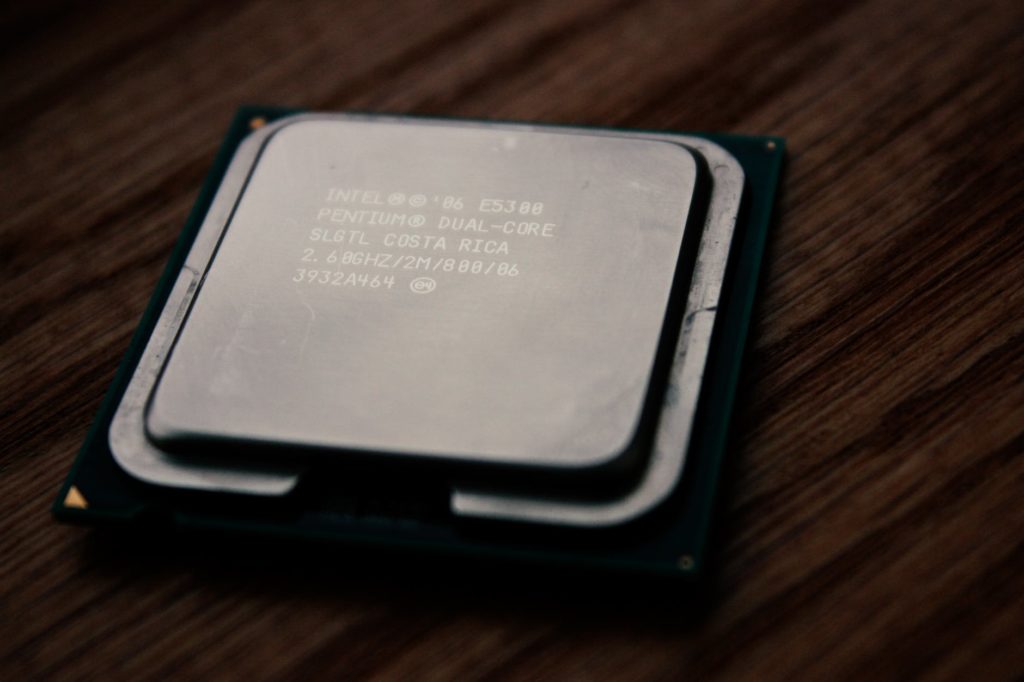
Before considering the characteristics of microprocessors and choosing the most popular models among them, let's look at its internal structure. After all, all of its basic parameters depend on what architecture the microprocessor has.
Technically, the CPU consists of:
-
- 1. Top part, cover, the material of which is metal. Its task is to protect the filling from the external environment, at the same time performing the role of a heat sink. It is on the cover that the heat-conducting mastic is applied on which the cooler is placed.
-
- 2. Actually, the core itself, or as it is also called, a stone, a crystal that provides the processor. The crystal makes a certain number of calculations per unit of time, this parameter is called the clock frequency (PM). The core also contains cache memory, which plays the role of an intermediate storage cell between the processor and RAM. It is this cell that stores the information most often demanded by the microprocessor, which it presents instantly without the participation of RAM, which greatly increases the speed of work. It can also contain additional sections responsible for video display in case an external video card is not connected. "Communication" between cores is done by threads between the cache memory of each core. The processing of a binary code (0,1), a bit coming from the outside per unit of time, is called the capacity.
-
- 3. A contact platform that serves as a link between the cores and the motherboard. The platform contacts are called a socket. When assembling a computer, it is the combination of processor and motherboard sockets that should be taken into account, the coincidence of the cache memory clock frequency with the RAM frequency. Old, stationary computers also had "bridges", South, North for the interconnection of the "motherboard" with the CPU. Modern cars have only the South Bridge.Unfortunately, the failure of a laptop of this bridge, unlike a stationary computer, is almost certainly tantamount to buying a new laptop.
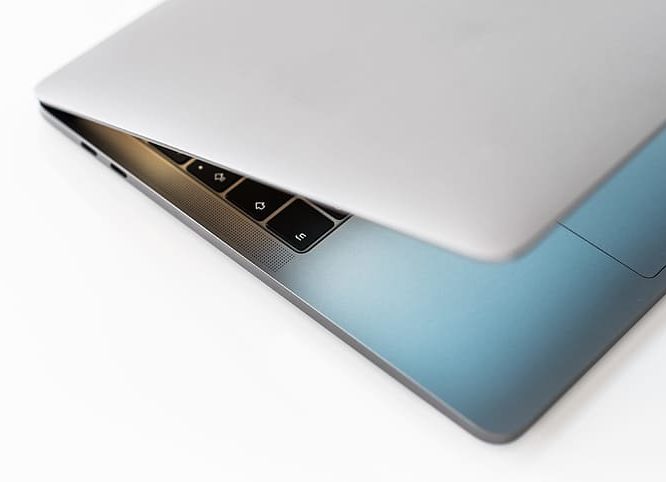
Let's consider the parameters of the above parts in more detail, namely their features and basic data.
The crystal structure consists of a billion transistors per square nanometer. This parameter is called technical process, measured in nm. The higher this number, the more there are transistors per square nanometer, which has a positive effect on performance, energy consumption, and heating of the "processor".
Last, heat dissipation (TDP), the lower its value, the longer your laptop will work. Modern technology of the technical process makes it possible to create crystals with billions of transistors on a substrate without a significant increase in heat dissipation and power consumption.
A special conversation about the number of cores. It is now customary to recommend the purchase of computer equipment with several "stones", at least four. However, everything is not so simple here.
It's all about speed
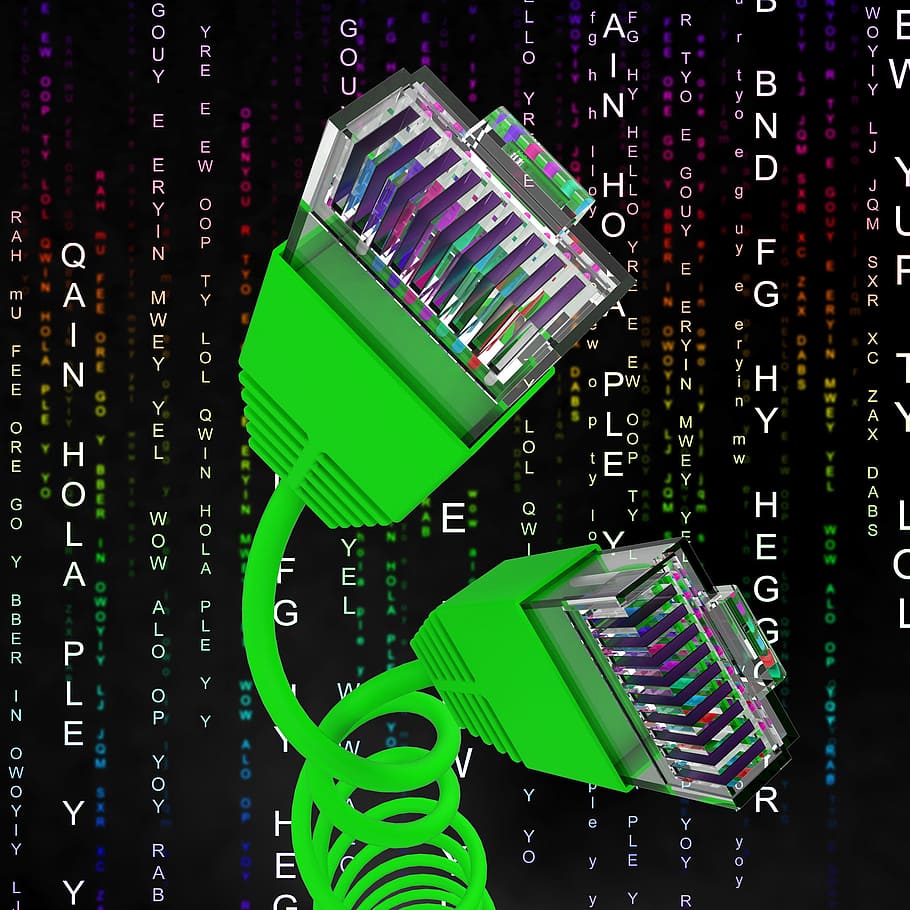 Multi-core is necessary to perform several tasks at the same time, and, as a rule, some of them, for example, the third or fourth stone, have a certain specialization, for example, they are responsible for graphics. But for fast work with documents, a large number of cores are not required.
Multi-core is necessary to perform several tasks at the same time, and, as a rule, some of them, for example, the third or fourth stone, have a certain specialization, for example, they are responsible for graphics. But for fast work with documents, a large number of cores are not required.
CPU speed depends not only on the number of cores, but also on their clock frequency. Very often you can read how the cores are multiplied by the frequency. For example, 4 cores at 1500 GHz are considered a much better choice than 4 at 1200 GHz. Since in the first case we get 6,000 GHz, and in the second 4,800 GHz. But such a multiplication is incorrect, because PM is unchanged, no matter how many "stones" you add. Only the speed of information processing is increasing. Some technologies allow changing the clock frequency under heavy load, gradually increasing it by about 100 - 150 MHz in stages. AMD has such a line of processors called Core from AMD, Intel - Thermal Velocity Boost. Many users, especially gamers, try to overclock the processor by themselves supplying increased voltage to the chip, but this method leads to rapid overheating, and as a result, its failure.
It would be more interesting and more correct to increase the clock frequency through the BIOS. And some processors, they are called with an unlocked overclocking multiplier, allow you to do this (overclocking). What will it give? The clock frequency is calculated by multiplying the frequency of the bus itself (FSB) by a multiplier of the processor (multiplier). If the FSB is 180 MHz, and the multiplier is 10, then we get a clock speed of 1800 GHz. If the multiplier is unlocked by making it a multiple of 11, then the clock speed rises to 1980 GHz. But to do this, even if the chip supports such a possibility, only an experienced user who is familiar with the BIOS settings system is capable.
With such self-overclocking, it is necessary to carefully monitor the temperature of the CPU, because at temperatures above the operating system, the system will simply turn off the netbook.
Intel has such a lineup of processors called Extreme Edition and Black Edition, respectively, from AMD.
Suppose certain information arrives at the chip, the data of which it sequentially processes. In this case, part of the data will be in the queue in the buffer (cache), which will cause a kind of "traffic jam". It can be generated if a failure occurred when requesting data from the cache or incorrect operation of the branch prediction module. Intel's hyper-precision technology can solve this problem, which allows processing multiple data streams at once in one unit of time. Tests show that Hyper-threading technology can increase productivity by up to 30% while increasing power consumption by only 5%. However, not every operating system supports hyper-fidelity technology, so the latest generation OS is the best choice. But even in them, hyper-precision accelerates the processor's work not automatically, but only with the help of special software, whose optimization with Hyper-threading allows using the full potential of the microchip. Since the constant inclusion of this technology leads to unreasonable energy consumption.In addition, during the gameplay, Hyper-threading is useless, since data is received by all threads at the same time, after which the cache is simply "clogged". The best application of Hyper-threading is working with graphic and video editors (Photoshop, Corel Draw, Maya, 3D's Max, Sony Vegas, Adobe Illustraror), archivers (WinRar, 7-Zip, Ark). The latest developments of such technology appear at Intel's competitor, AMD under the abbreviation SMT. The performance table for SMT processors shows that they are able to process twice the number of threads than Intel's Hyper-threading.
What processors are there?
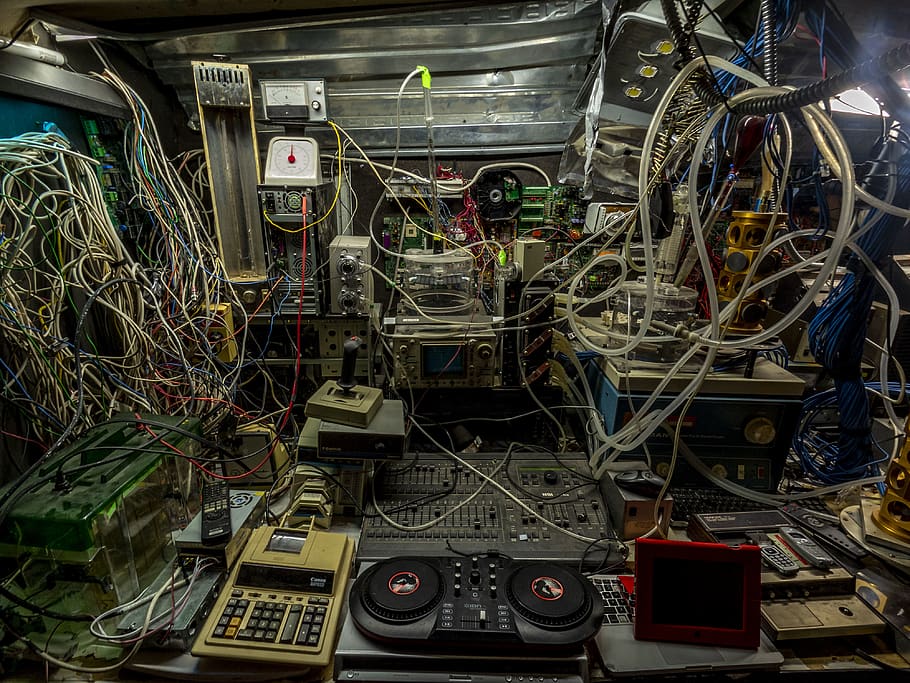 So, you decided to buy a laptop with a powerful processor, but even being fast, they are different, differing, of course, primarily in the number of cores. In general, all CPUs, like laptops, can be conditionally divided into three parts:
So, you decided to buy a laptop with a powerful processor, but even being fast, they are different, differing, of course, primarily in the number of cores. In general, all CPUs, like laptops, can be conditionally divided into three parts:
- Office - whose main task is "surfing" the Internet, working with documents, viewing multimedia files (photos, 4K video, audio);
- Workstations - for working with vector, raster graphics, for processing, video editing, programming, rendering;
- Gaming - for games that are demanding on computer resources.
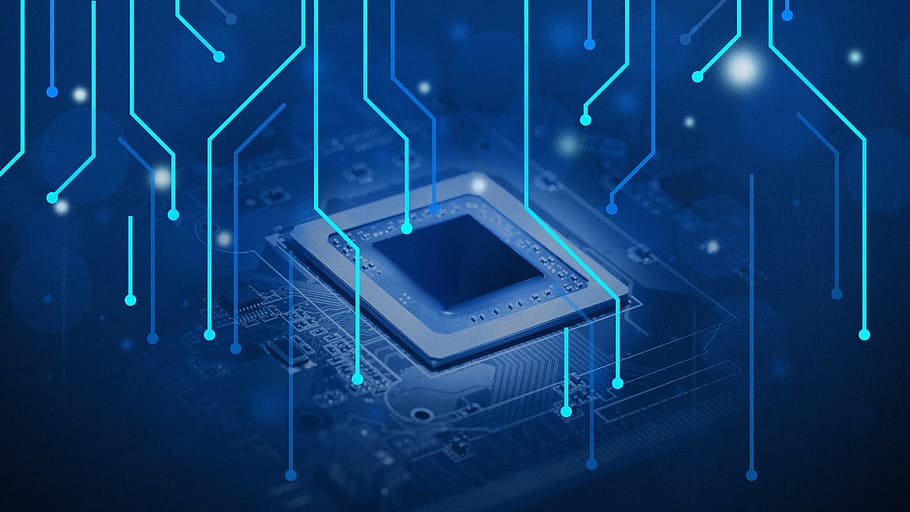
Accordingly, the more requirements for a chip, the number of "stones", bit capacity, the more expensive it is, but there are pitfalls here too. First of all, it should be said about laptops for gamers, as they are the most expensive. In addition to the fact that they will require a minimum of 6 "stones", whose minimum clock frequency is 3.6 GHz each, they will also need a lot of RAM, an external video card, and a large display. The most important thing for such a processor is high-quality cooling, which is not always possible in a laptop. But even if all these requirements are met, a gaming netbook is unlikely to reach a stationary one, which is also much cheaper at a price.
If your selection criteria are performance, multitasking, for example, when working with graphics, programming, then you should take a closer look at hyper-precision technologies, so that they support the ability to unlock overclocking. The number of "stones" of such a microchip can be within 6, the clock frequency is in the range of 2-4 GHz.
For a laptop whose purpose is simple, everyday work, two to four cores, 2-3 GHz are enough. At the same time, you should not chase the size of the cache memory, because its unreasonable increase will affect the increase in heat generated, decrease the battery life. Namely, this is the main advantage of any laptop. The optimal cache value is about 3-4 MB.
And lastly, the bit capacity of the microprocessor determines the laptop's ability to install RAM. So 32 bit allows you to work with RAM whose volume is a maximum of 2 GB, 64 bit
- more than 2 GB.
Which company is better to choose
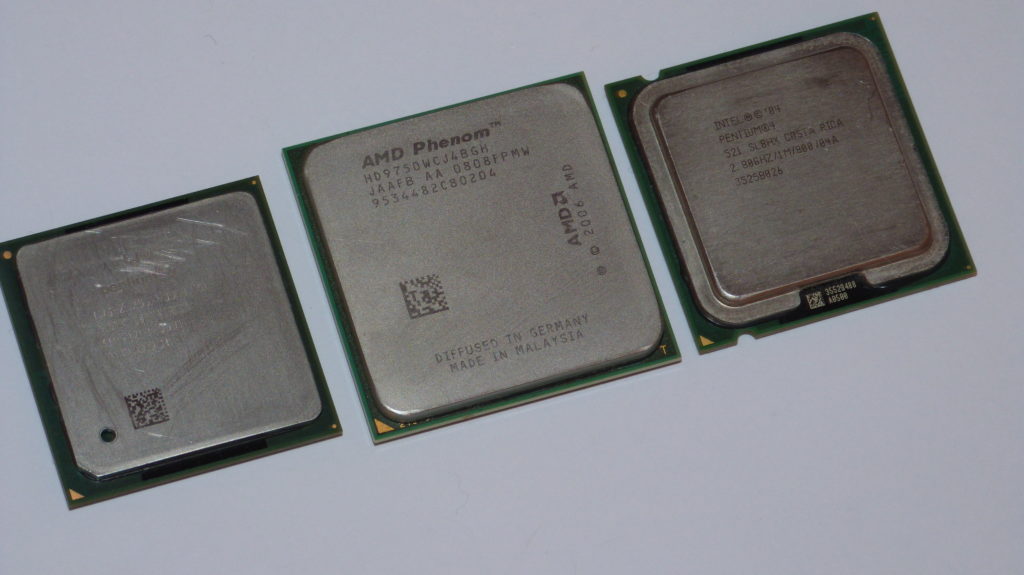 By and large, there are only two manufacturers, the aforementioned Intel and AMD companies. There are, of course, others, usually Asian counterparts, that produce microprocessors, but they are so few in number that they do not bear any comparison with these two giants. And since AMD, Intel at the moment are undoubtedly the best microchip manufacturers, let's take a closer look at the entire range of products of these corporations.
By and large, there are only two manufacturers, the aforementioned Intel and AMD companies. There are, of course, others, usually Asian counterparts, that produce microprocessors, but they are so few in number that they do not bear any comparison with these two giants. And since AMD, Intel at the moment are undoubtedly the best microchip manufacturers, let's take a closer look at the entire range of products of these corporations.
Intel products are represented by the following spectrum:
- Intel Celeron - a series of processors based on the Core core, the cheapest, low-performance in the entire range of the company;
- Pentium - a slightly higher rank, inexpensive microchips based on the Atom chip;
- Intel Core M - this type of processor has an average performance;
Intel Core is the "elite" of all Intel products, the most powerful gamut in its line.
Why gamma? Yes, because almost each of the series presented above has its own subspecies.
For example, in the Core M series there are subspecies M3, M5, M7. The higher the number of the subspecies, the more powerful the subspecies. In the Core series, such subspecies will be i3, i5, i7. In addition to the numerical product, Intel also includes a letter designation:
- Y - most economical, field of application - ultrabooks;
- U - slightly less economical (up to 28 watts inclusive), installed on ultrabooks;
- H / HQ - with good performance, with additional graphics processing cores;
- MX - the best in performance for mid-range notebooks, above the average price category;
- M - mobile processors with averaged power and energy consumption indicators;
- MQ - mobile, 4-core processors;
- X - the most high-performance, top-end, gaming laptop segment;
- K - have the ability to increase performance using custom "overclocking".
The situation with the designation of AMD products is a little more complicated, since it depends not only on the type of chipset, but also on its generation. At the moment, the chips produced by AMD have a digital value of 9, and the following spectrum:
- AMD Ryzen - the latest generation with high data, but no integrated graphics;
- Raven Ridge - slightly simpler, with integrated Vega graphics;
- AMD FX - gaming microprocessors, no internal graphics card;
- AMD Ryzen Pro is one of the very best high-performance gaming solutions available from AMD;
- AMD E - budget chipsets;
- AMD Pro A is a great solution for a laptop in the work area.
The latter, with the letter A, have subclasses:
- 12 - main field of activity: high quality video playback, including from the Internet, games (online, browser), work with several tasks at the same time;
- 10 - low power consumption, energy efficient, with decent performance, capable of playing high definition video, but only offline.
- 9 is an excellent solution for the home, capable of solving several multimedia tasks at the same time;
- 8 - able to perform several tasks at the same time, but without a playful orientation;
- 6, 4 are the simplest of the entire line of chipsets.
The hottest "battles" on the Internet forums dedicated to choosing a laptop, flare up over the choice of the "heart" of the machine, between AMD and Intel.
The advantages of Intel products include the great popularity of models from this company, due to which developers write their games for these chipsets. And among such software companies are brands with a worldwide reputation. Moreover, there are games whose work with AMD is simply impossible due to its orientation specifically for the Intel chip. Another, gaming nuance, is that most games are also written for Nvidia video cards. This company is a direct competitor to AMD's Radeon. Of course, a conflict between Nvidia video cards and a chipset from AMD is almost impossible, but the advice of experienced gamers is not to risk it. Intel's drawback is the high average price of even budget CPUs, the impossibility of overclocking most of the models. Although why overclock already powerful processors is still a question.
AMD's advantage is its low price and relatively good performance. But they consume more energy, heat up more, and therefore coolers will make noise during operation. Therefore, the question of which laptop is better to buy is sometimes unambiguous. More power, rich gaming functionality means an Intel chip. Budget, everyday work - AMD.
Rating of high-performance laptop processors for 2020
INTEL
Core i9-8950HK
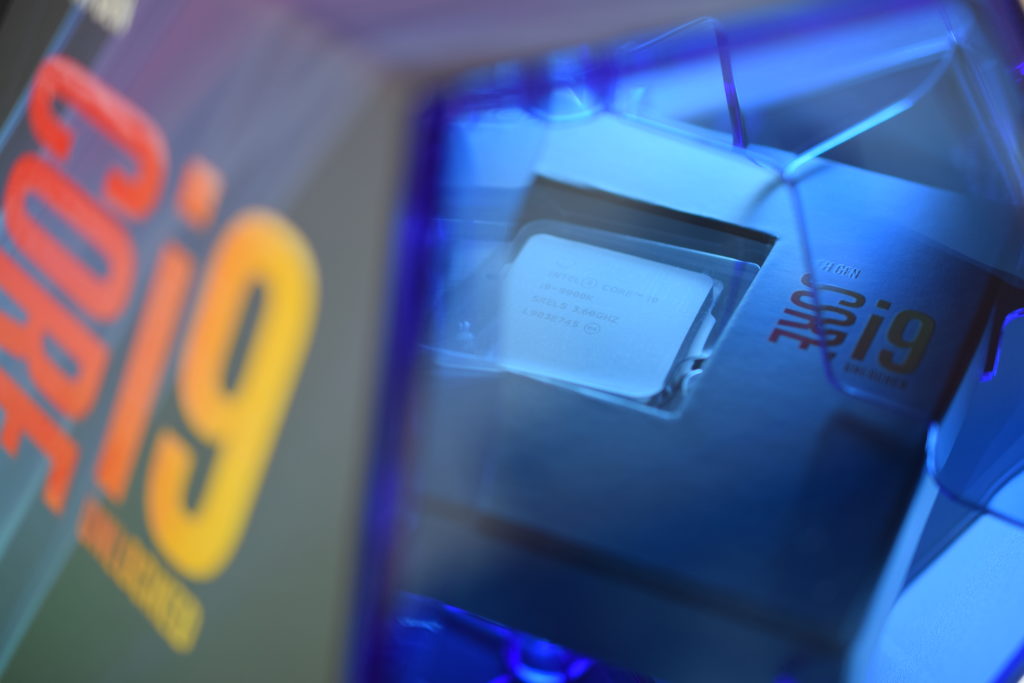
One of the top-end chips at the moment. No wonder the architect of its construction is called Coffee Lake. A laptop with i9-8950HK really, as if sipping a cup of burning coffee, instantly starts performing the tasks. And all thanks to twelve threads, high clock speed, 6 cores. Already the initial configuration, without an external video card, will allow you to watch high quality films, work with photo and video editors. And if you connect a discrete graphics card, then there will be no equal to such a gaming laptop. In addition, the i9-8950HK supports Hyper-threading overclocking technology. If the temperature of the "crystal" does not exceed 50 degrees Celsius, then it is quite possible to raise the PM from 2.91 to 4.3 (on all "stones") or to 4.8 GHz (maximum on one).
| Number of Cores | 6 |
|---|---|
| Clock frequency | 2.91 GHz |
| Number of threads | 12 |
| Memory cache | 12.3 MB |
| Additional features | Hyper-threading |
Advantages:
- Possibility to increase PM;
- Excellent speed of work;
- Multithreading.
Disadvantages:
- Price;
- Large heat dissipation, therefore, high power consumption, noise;
- Weak integrated graphics.
Core i7-7820HK
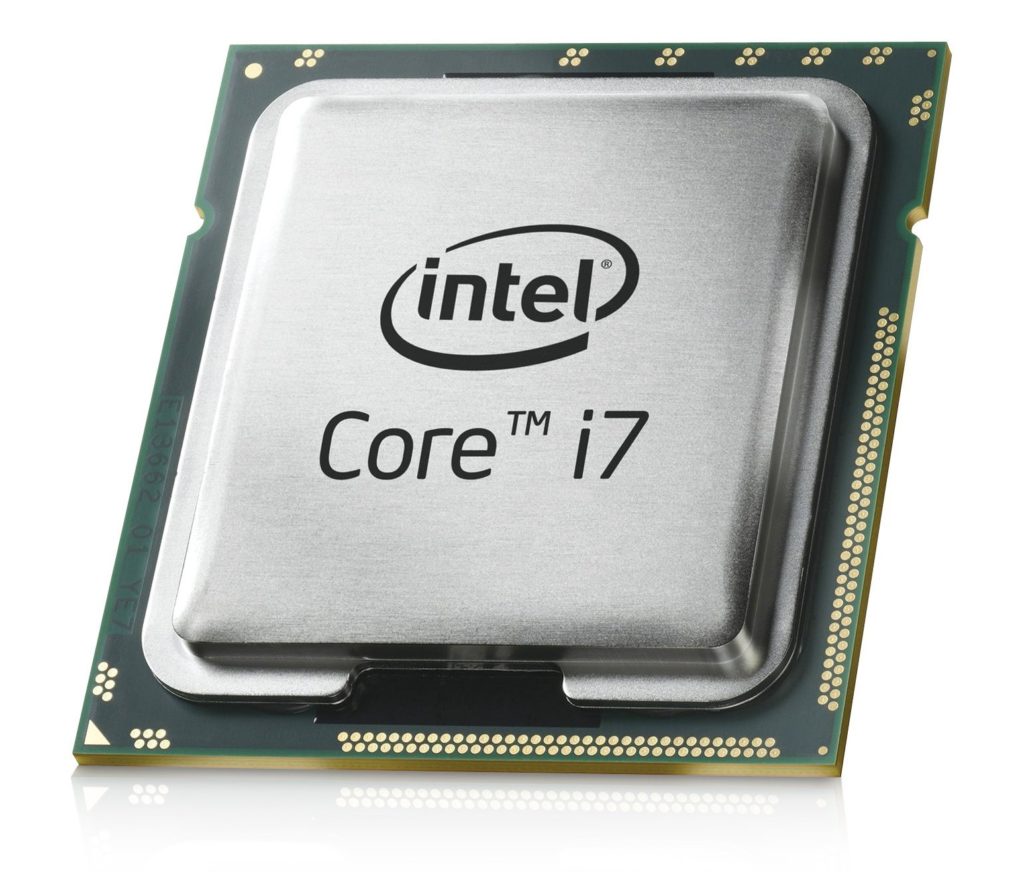
A worthy representative of the seventh generation INTEL chips, whose base is Kaby Lake with four "stones". The energy consumption of the i7-7820HK is minimal, because there is a Speed Shift technology that controls the i7-7820HK, preventing it from overheating, while developing maximum power. Another indisputable advantage of this model is three-level caching: 256 KB, 1 MB and 8 MB. Therefore, high speed when solving even several tasks is quite common for the Core i7-7820HK.
| Number of Cores | 4 |
|---|---|
| Clock frequency | 2.9GHz overclocked to 3.9GHz. |
| Number of threads | 8 |
| Memory cache | 8 Mb |
| Additional features | Ability to connect three monitors |
Advantages:
- Overclocking capability;
- Excellent performance;
- Quite good graphic stuffing;
- By and large, there are not 4, but eight cores.
Disadvantages:
- Extremely demanding on the heat sink;
- High price.
Core i5-8300H
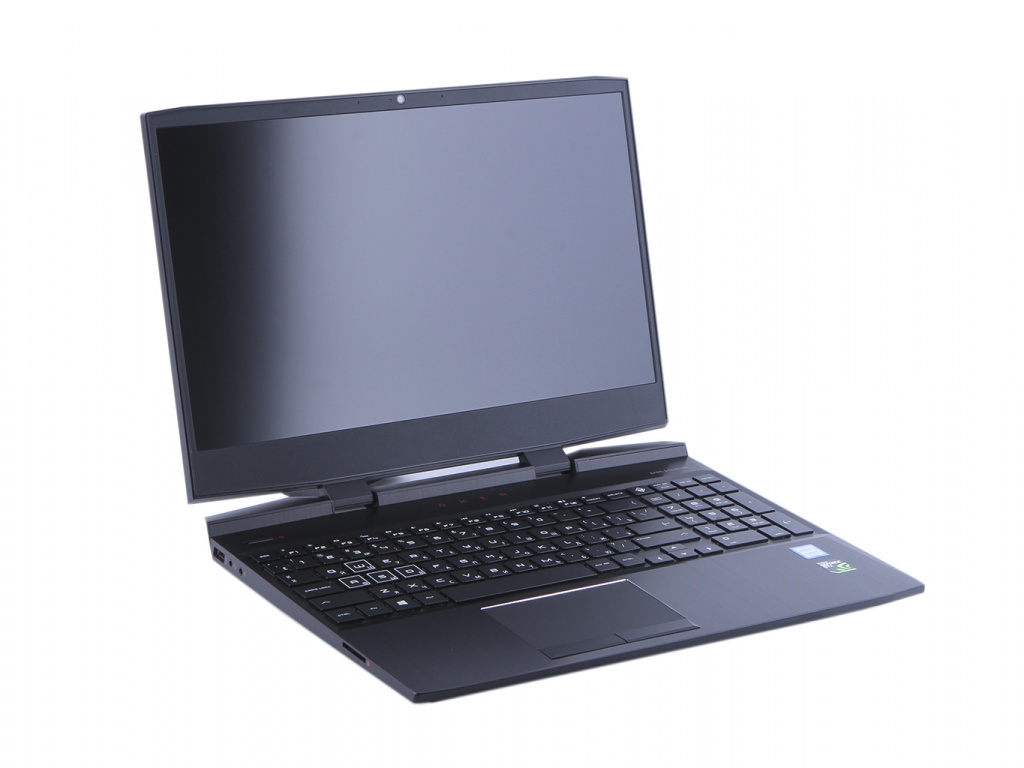
This CPU is a simplified Core i9-8950HK as it is based on the same Coffee Lake architecture. The basis of the i5-8300H is a quadro "stones" with 2 threads each. As the "older" brothers, it has a three-level cache (256 KB, 1 MB, 8 MB), which somewhat smoothes its simplified scheme, and as a consequence, a low level of performance. But the Core i5-8300H has a reasonable price tag. Therefore, if the question “how much does a good laptop cost?” Is vital for you, pay attention to the i9-8950HK.
| Number of Cores | 4 |
|---|---|
| Clock frequency | 2.3 GHz |
| Number of threads | 8 |
| Memory cache | 8 Mb |
| Additional features | Not |
Advantages:
- Decent speed;
- Relatively low price category;
- Frequency tuning up to 4 GHz for high loads.
Disadvantages:
- High plate heating;
- No manual overclocking;
- It is better not to work without a discrete graphics card.
Core i7-8550U
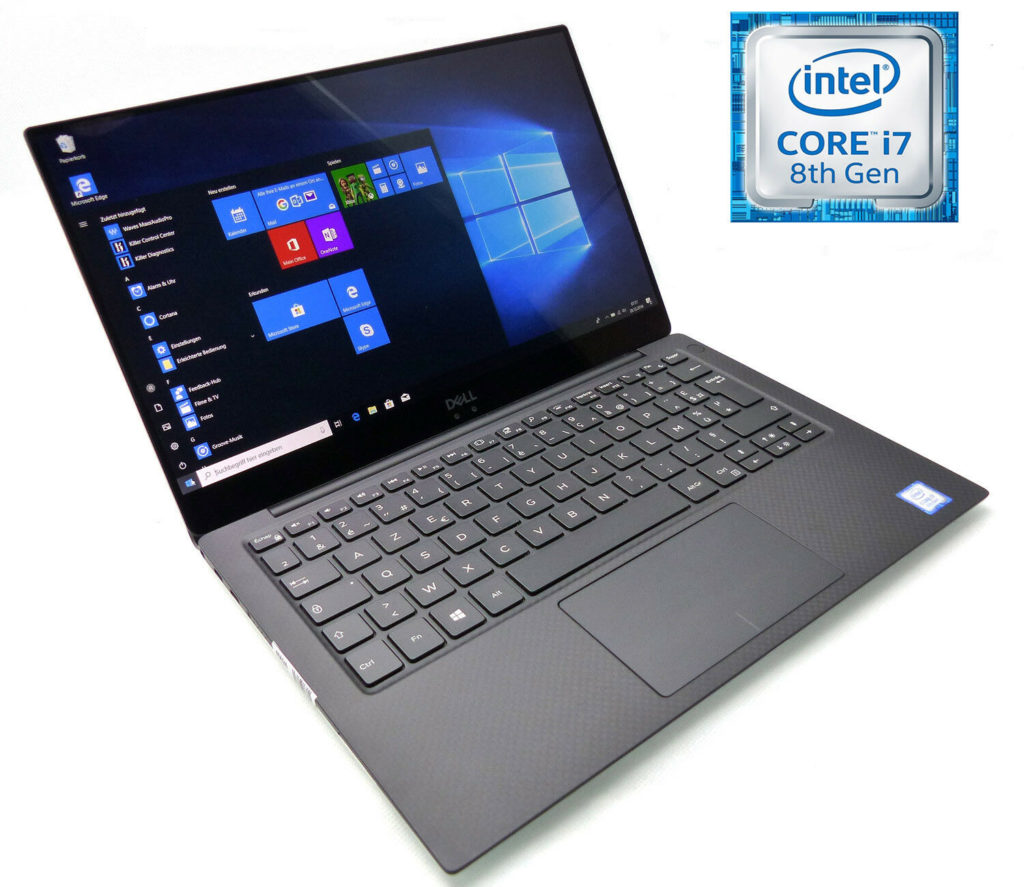
If the above microchips were intended for computer games (with external video cards connected), working with complex, voluminous processes, then the key role of the Core i7-8550U is the decent performance of the ultrabook. Therefore, the highlight of the Core i7-8550U is a minimum of heat generation, a sparing mode of power consumption. At the same time, the Kaby Lake Refresh microarchitecture develops multithreading, two threads for each "stone".
Often the Core i7-8550U review contains information about the lack of support for working with multiple monitors. However, the official website of INTEL says that this mode is supported by this chipset.
| Number of Cores | 4 |
|---|---|
| Clock frequency | 1.8 GHz maximum, when overclocked to 4 GHz. |
| Number of threads | 8 |
| Memory cache | 8 Mb |
| Additional features | Hyper-Threading |
Advantages:
- The ability to adjust the PM;
- Minimal energy consumption with decent performance;
- Excellent heat transfer performance.
Disadvantages:
- Only a workhorse;
- High price.
Core i5-8250U
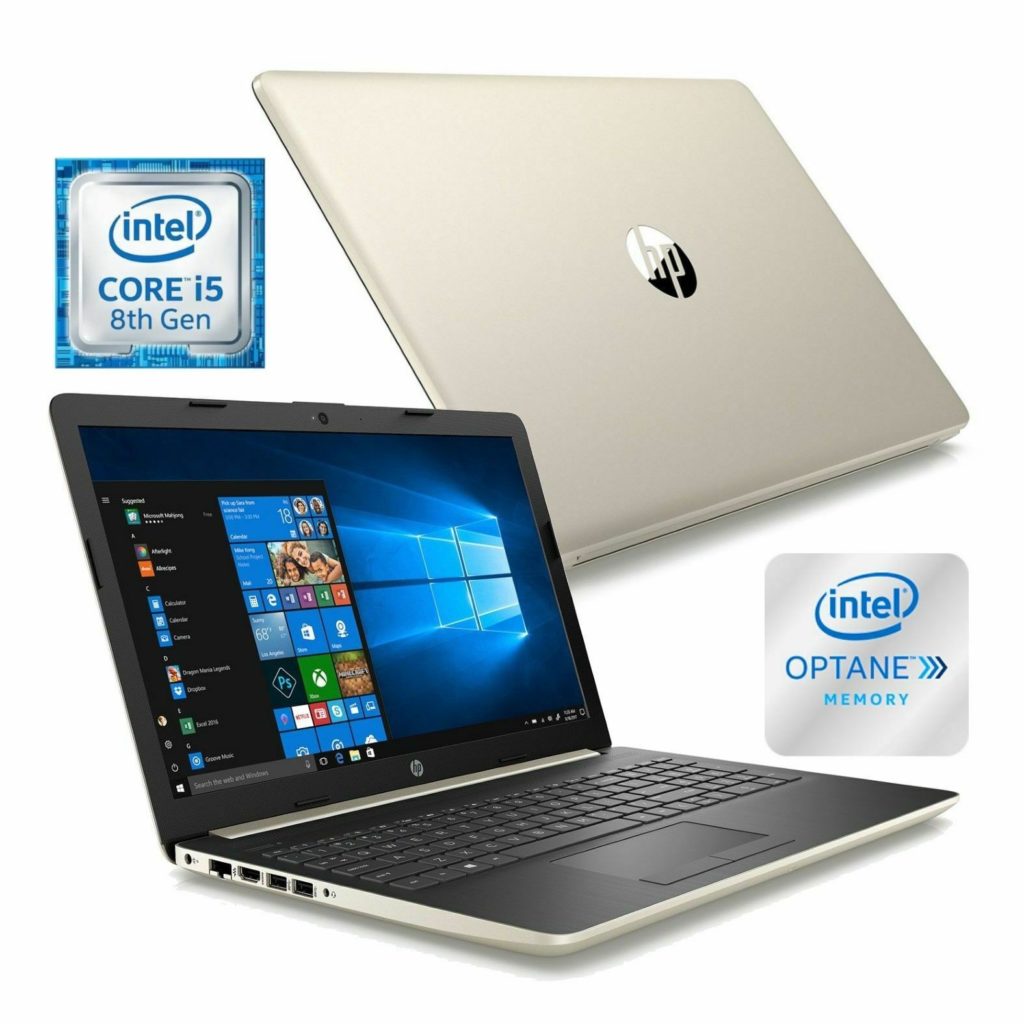
Another "ultrabook" copy, whose proprietary feature is a wide-range PM setting (Turbo Boost technology). This, combined with hyper-precision technology, makes the "percent" Core i5-8250U capable of solving multiple tasks simultaneously without much delay. Therefore, office tasks, graphic editors are in his teeth. Unfortunately, the Core i5-8250U cannot be overclocked, so it's better to forget about games. Although why play on an ultrabook is another question.
| Number of Cores | 4 |
|---|---|
| Clock frequency | 1.6 - 3.4 GHz |
| Number of threads | 8 |
| Memory cache | 6 Mb |
| Additional features | Turbo Boost |
Advantages:
- Excellent value for money:
- Long battery life of the ultrabook;
- Turbo Boost technology.
Disadvantages:
- No overclocking;
- Poor graphics.
Core i7-7500U
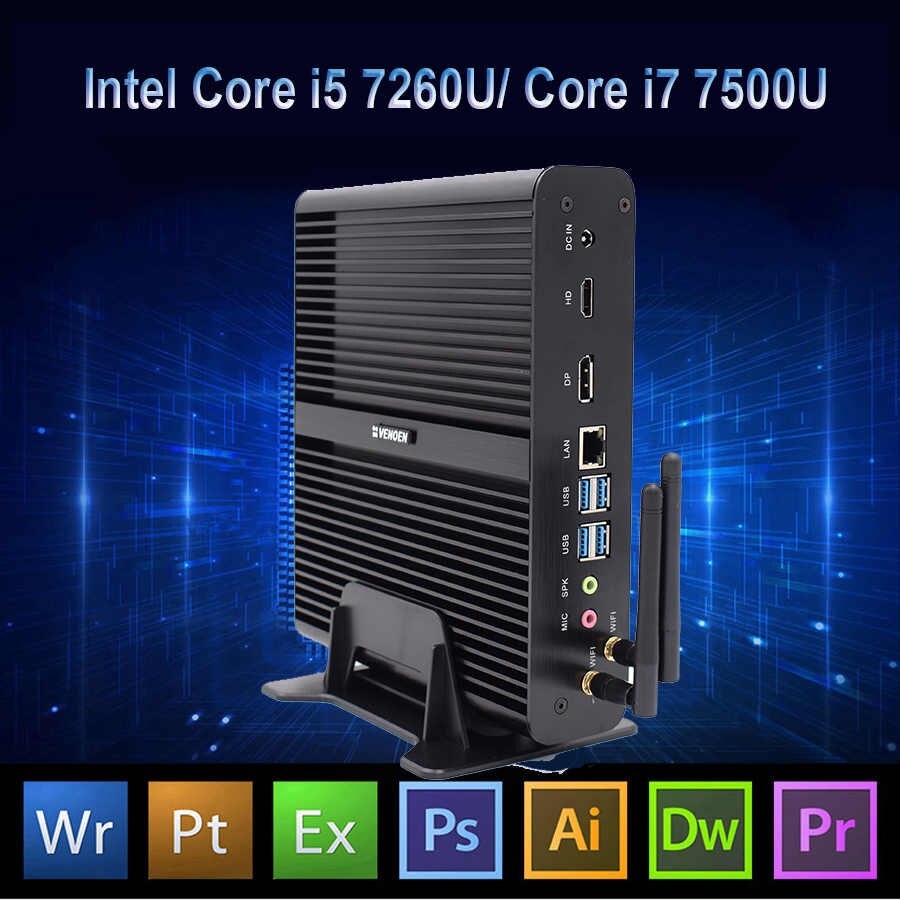 One of the most common budget category "proces" which, according to buyers, provides excellent laptop performance in everyday work. Let it have few cores, only two, but it will not annoy you with unnecessary noise, the need to monitor the temperature, providing a long time of work, Internet surfing, watching videos. I must say that a netbook based on the Core i7-7500U platform disappears pretty quickly from the shelves of online stores, so it is rather difficult to order it through them.He is still able to master online games without noticeable "brakes".
One of the most common budget category "proces" which, according to buyers, provides excellent laptop performance in everyday work. Let it have few cores, only two, but it will not annoy you with unnecessary noise, the need to monitor the temperature, providing a long time of work, Internet surfing, watching videos. I must say that a netbook based on the Core i7-7500U platform disappears pretty quickly from the shelves of online stores, so it is rather difficult to order it through them.He is still able to master online games without noticeable "brakes".
| Number of Cores | 2 |
|---|---|
| Clock frequency | 2.7 - 3.5 GHz |
| Number of threads | 4 |
| Memory cache | 4 Mb |
| Additional features | Turbo Boost |
Advantages:
- Dynamic frequency control;
- Good performance.
Disadvantages:
- No overclocking capability;
- Relatively high price with only two cores.
AMD
Ryzen 3 2200U
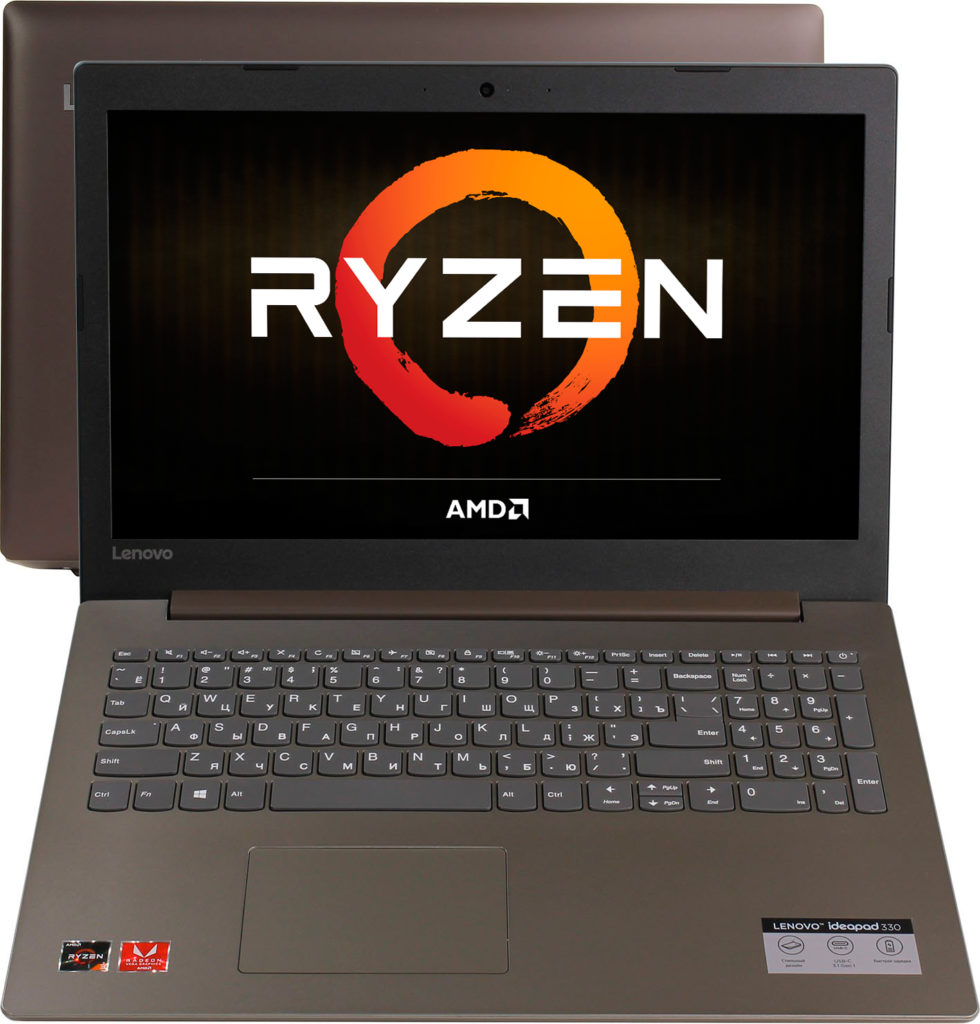
One of the best AMD CPUs. Its numerous tests showed that in terms of power it is quite possible to compare the Ryzen 3 2200U with the power indicators of similar CPUs from INTEL (Intel Core i5, i7). And these processors are much more expensive. In addition, the undoubted advantage of the Ryzen 3 2200U will be its built-in graphics module, capable of running video games, even at minimal settings.
| Number of Cores | 2 |
|---|---|
| Clock frequency | 2.5 - 3.4 GHz |
| Number of threads | 4 |
| Memory cache | 4 Mb |
| Additional features | Interoperability with DDR4-2400 |
Advantages:
- Decent graphics chip
- Parallel computation across multiple cores;
- One of the fastest in its price range.
Disadvantages:
- Price higher than Intel Core i5, but lower than Intel Core i7.
AMD RYZEN 5 2500U
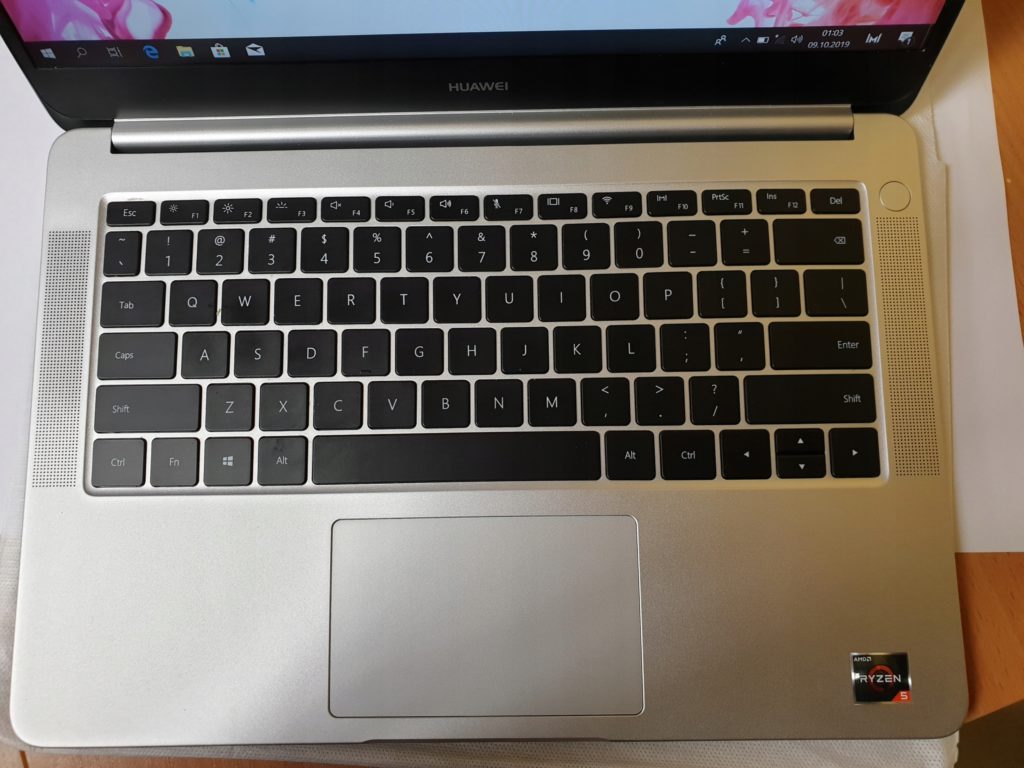
User recommendations regarding AMD RYZEN 5 2500U are unambiguous. On its basis, it is possible to build, if not the most powerful, but also not the most expensive, gaming laptop. Indeed, even its built-in module responsible for graphics is ahead of similar Intel modules. Adding the same video card, you are guaranteed a fairly long, pleasant pastime for computer games.
| Number of Cores | 4 |
|---|---|
| Clock frequency | 2 GHz |
| Number of threads | 8 |
| Memory cache | 4 Mb |
| Additional features | Dynamic PM extension up to 3.6 GHz |
Advantages:
- Decent graphics even without an external graphics card
- Allows the netbook to work for a long time without charging;
- Floating depending on PM load.
Disadvantages:
- Lack of manual overclocking;
- High price.
A9-9420
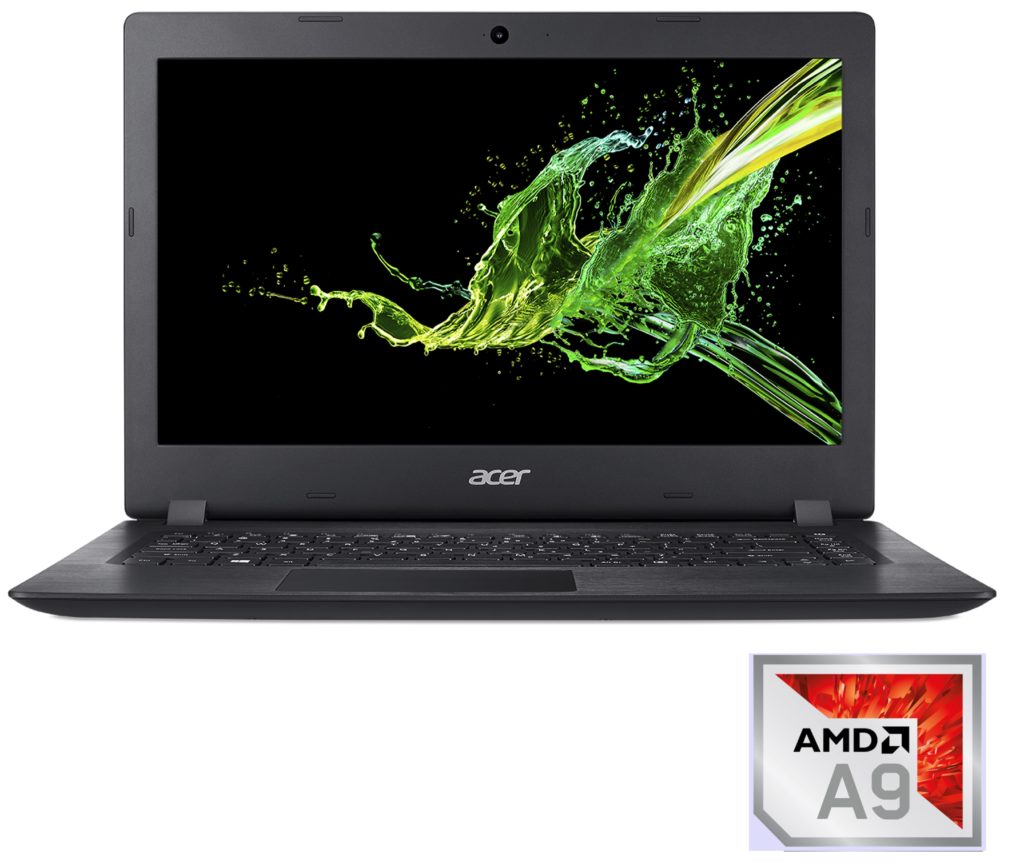
At the end of our rating of the most productive laptop chips for 2020 is the "modest" A9-9420. Of course, he is far from his powerful counterparts, but in the online store you can find laptops on his platform, and the demand for them is quite stable. The description of the A9-9420 is certainly not impressive, two "stones", a small cache size, a slight variation in PM. However, the reviews of those who bought such "cars" are positive. The built-in graphics chip allows you to watch videos of good resolution, and the low power resource makes the viewing for a long time, without being limited by the power supply cord. He will "pull" online games like WOT, some graphic editors.
| Number of Cores | 2 |
|---|---|
| Clock frequency | 3 GHz |
| Number of threads | 2 |
| Memory cache | 1 Mb |
| Additional features | Not |
Advantages:
- PM adjustable automatically;
- Good graphics module data.
Disadvantages:
- Lack of multi-threaded work:
- Old-style technical process;
- Low power.
Conclusion
This article won't be complete without your advice on how to choose a decent Ultrabook model, where to buy it, and what to look for when buying. We will be interested in your comments, and they will surely help readers avoid mistakes when choosing such an expensive technique.












